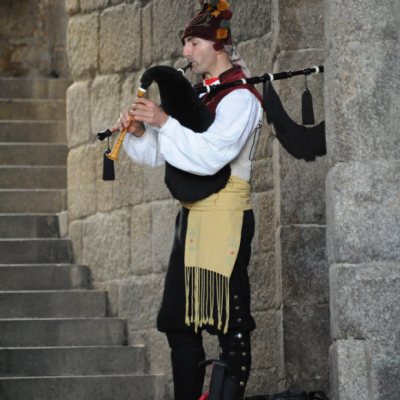I had the opportunity to visit the beautiful town of Kotor in Montenegro a few weeks ago. I had first visited the stunning medieval town nine years ago and was captivated by its stunning location at the end of a deep inlet and the well-preserved condition of much of its buildings. Indeed, it was so perfect that it almost looked fake — like a recently constructed film set. On both occasions, I visited the town from a cruise ship. In 2010, I was aboard Azamara Cruises as part of a week-long itinerary from Rome (Civitavecchia) to Venice. On my recent trip, I was sailing on the newly launched Sky Princess from Trieste to Athens and the solitary stop on the four-day sea journey was at Kotor.
Wow, how things had changed in those brief nine years! As soon as I went to exit the small port area for the short walk across the road to the town’s main gate (Kotor is still surrounded on all sides by its original defensive walls), my travelling companion and I were accosted by a wall of men, all brandishing laminated A3 copies of their respective excursion offerings and all promising unrivalled value for money and a unique tourism experience. One in particular, called Branco, was persistent to such an extent that we finally agreed to listen to his hurried pitch if he could convince us in the 30 seconds or so it took us to walk out of the small port area. Branco rose to the occasion and by the time we had gotten to the place where we would ordinarily have parted company, he had convinced us that his personally escorted private tour for the two of us in an air-conditioned Mercedes for the morning that would include a trip up the bay to the picturesque village of Perast; a boat trip across the bay to the tiny island of out Lady of the Rock with its impressive early 18th century church, a detour up to the top of the mountain that overlooks Kotor to see Castle Giovanni (built by the Venetians) and dropped back to town by lunchtime for €40 each was a bargain — which it turned out to be!
During our couple of hours in Branco’s company in which we discussed the history of the region (some of which I already knew), I was shocked to hear that almost 600 cruise ships now visit Kotor each year, with up to six ships visiting the small town in a single day. There were three or four cruise ships anchored in the bay on the day that I was there. With modern cruise ships now able to accommodate up to 5,000 or 6,000 passengers at a time, that means that visitors to the beautiful medieval town cold easily be double those of the town’s inhabitants on a busy day.
Montenegro is a small country almost half the size of Munster and with a population roughly half that of Dublin. It is almost completely mountainous with just a small sliver of land along the coastline that could be called flat, so agriculture is not really an option as a revenue earner. It does however enjoy a spectacular setting and glorious weather, so it is inevitable that Tourism represents the commercial lifeblood of this tiny country bordered by Bosnia, Herzegovina, Serbia, Kosovo, Albania and Croatia. Branco, our driver, was in his early 30’s but owned his own business (his guiding) and his car and had holidayed earlier this year in St. Lucia and made regular trips to Berlin and other European capitals. Clearly, tourism was good for him and his family. It was also evident from my walk around Kotor that tourism was good for the town too — if all the new shops, bars, restaurants and new-looking cars were anything to go by. What wasn’t good were the throngs of people that I had to negotiate as I walked from one end of the walled town to the other. Literally every space; every square; every alleyway was swarming with tourists and I pitied them for the less than authentic experience they were having — particularly when compared to mine of almost nine years ago.
And this is the problem. No one would deny anyone else with the opportunity to make a better life for themselves and their families but we, as tourists, feel short-changed when the reality fails to measure up to the picture postcard image that we have in our heads. Well established and popular tourist destinations in Spain such as Palma and Barcelona are already suffering a backlash as locals declare that they’ve had enough of over tourism so will the next trend be for travelers like you and me to keep on raising the experiential bar by seeking out less accessible, less popular or less tourist friendly destinations around the world so we can try and experience a sense of being privileged to see them before they become overrun by unsustainable numbers of fellow travelers and become yet another homogenized travel experience?





